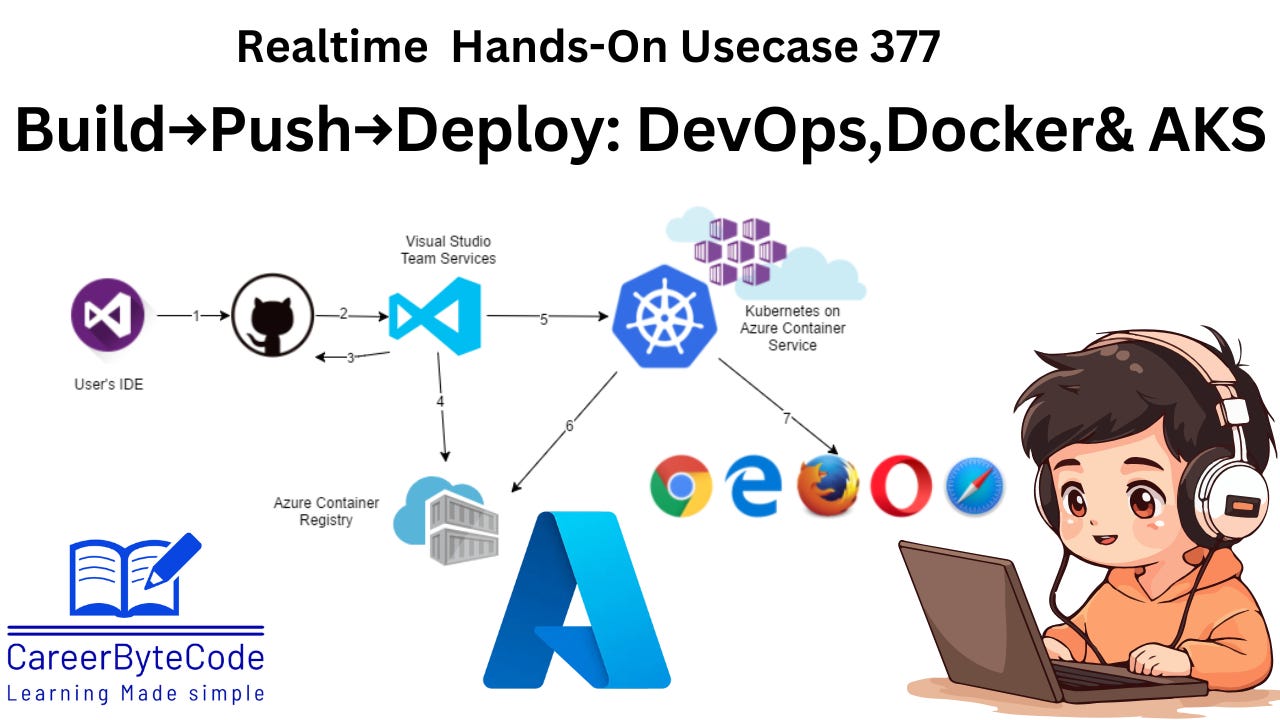How to Build an End-to-End CI/CD Pipeline Using Azure DevOps, Docker, and AKS
Cloud-native application development, teams struggle to maintain consistent, automated, and scalable deployment workflows.
1. Problem Statement
In modern cloud-native application development, teams struggle to maintain consistent, automated, and scalable deployment workflows. Manual build and deployment processes lead to:
Frequent human errors
Deployment delays
Inconsistent environments
Lack of traceability and visibility
Organizations face challenges in:
Seamlessly integrating code from GitHub
Automating the Docker image creation and publishing
Deploying the application into a production-grade Kubernetes environment
Managing secure, scalable, and repeatable CI/CD pipelines
Setting up self-hosted agents to optimize cost and performance
There is a critical need for an end-to-end CI/CD pipeline that connects source code to production deployment using modern DevOps tools like Azure DevOps, Docker, and Azure Kubernetes Service (AKS).
This use case aims to address these challenges by building a robust, automated pipeline that:
Builds code from GitHub
Creates Docker images and pushes to Docker Hub
Deploys to AKS using Kubernetes manifests
Uses a self-hosted agent for cost-efficient and controlled execution
The goal is to empower developers and operations teams to deliver faster, safer, and more reliable software deployments.
2. Why We Need This Use Case
Modern applications demand rapid deployment, continuous feedback, and high availability. Manual deployments are time-consuming and error-prone. To address this, enterprises and developers are adopting CI/CD pipelines integrated with containerization and orchestration tools.
This use case enables:
Full automation of build, test, and deployment lifecycle
Faster delivery of new features through pipelines
Reliable deployment to Kubernetes clusters using containerized apps
End-to-end management of infrastructure from source code to Kubernetes cluster
This bridges gaps between development and operations, increases agility, and ensures application resilience.
3. When We Need This Use Case
You will need this setup when:
Building and deploying container-based apps using Azure DevOps + Docker + Kubernetes
You want to implement GitHub-to-Kubernetes deployment using CI/CD
Need custom self-hosted agents for consistent builds inside your Azure VM
Automating deployment of microservices to Azure Kubernetes Service (AKS)
You are mentoring or training teams on enterprise DevOps automation pipelines
4. Challenge Questions
Keep reading with a 7-day free trial
Subscribe to CareerByteCode’s Substack to keep reading this post and get 7 days of free access to the full post archives.



